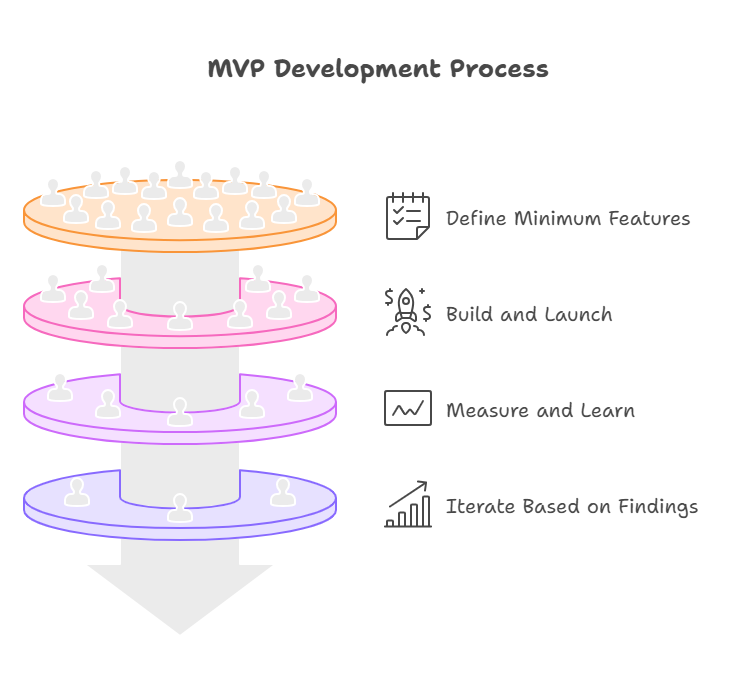What is a Minimum Viable Product (MVP)? Definition & Examples
Learn what a Minimum Viable Product (MVP) is, why it's crucial for product development, and how to build one to validate your business hypothesis efficiently.
What is a Minimum Viable Product?
A Minimum Viable Product (MVP) is the most basic version of your product that still solves a core problem for your target audience. According to the Scaled Agile Framework, an MVP is "an early and minimal version of a new solution sufficient to prove or disprove an epic hypothesis." Instead of spending months or years building a full-featured product that might not meet market needs, an MVP helps you validate your core business idea with minimal resources.
The University of Michigan's Business Tech blog explains that an MVP is the most basic possible version of your product that still solves a core issue for your audience. This approach prevents the common pitfall of developing extensive features only to discover that nobody actually wants the product.
Why Build an MVP?
Building an MVP serves several critical purposes in product development:
- Validate business hypotheses - Test whether your core value proposition resonates with real users
- Minimize development costs - Avoid investing heavily in features that customers don't need
- Gather authentic user feedback - Learn from actual usage patterns rather than assumptions
- Accelerate time to market - Launch faster and start the iteration cycle sooner
The fundamental principle behind MVPs is testing business hypotheses before making significant development investments. If your MVP proves successful, you can confidently invest further resources into development. If it fails, you've saved substantial time and money while gaining valuable market insights.
Key Characteristics of a Successful MVP
A well-designed MVP shares several essential characteristics:
- Solves one core problem - Focuses on addressing the single most important customer pain point
- Minimal feature set - Includes only the essential features needed to deliver core value
- Provides learning opportunities - Designed to generate maximum learning about customer needs
- Fast to build and deploy - Can be developed and launched quickly to start the feedback cycle
As ProductPlan notes, MVP solutions do not represent the product's overall vision—only subsets of that vision. This focused approach ensures you're testing specific assumptions rather than building a complete product based on untested hypotheses.
The MVP Development Process
Building an effective MVP follows a systematic approach:

Identify Your Core Hypothesis
Start by defining the fundamental assumption you want to test. What problem are you solving, and for whom? What evidence would prove your solution is valuable?
Define Minimum Features
Determine the absolute minimum set of features needed to test your hypothesis. Remove anything that doesn't directly contribute to validating your core value proposition.
Build and Launch
Develop the MVP quickly using the most efficient methods available. Launch to a small group of target users who can provide meaningful feedback.
Measure and Learn
Collect quantitative data (usage metrics, conversion rates) and qualitative feedback (user interviews, surveys) to validate or invalidate your hypothesis.
Iterate Based on Findings
Use the insights gained to decide whether to pivot, persevere, or stop development. The University of Michigan approach emphasizes that these ideas bring you back to the top of the product iteration cycle, creating a continuous improvement loop.
Common MVP Examples
Many successful companies started with simple MVPs:
- Dropbox - Began with a video demonstrating the file synchronization concept before building the actual product
- Airbnb - Started with the founders renting out air mattresses in their apartment during a conference
- Zappos - The founder began by taking photos of shoes at local stores and only purchasing them when customers ordered online
These examples demonstrate how MVPs can range from simple demonstrations to basic functional products, all designed to validate core business assumptions with minimal investment.
Planning Your MVP with ClipMind
Creating an effective MVP requires clear thinking and structured planning. ClipMind offers tools that can help you organize your MVP development process visually. Our AI Product Idea Brainstormer can help generate and refine your initial concepts, while the Project Planner provides a framework for mapping out your MVP development timeline and resource allocation.
The MVP approach represents a fundamental shift from traditional product development—from building extensively based on assumptions to building minimally based on validated learning. By starting with an MVP, you increase your chances of creating products that truly meet market needs while conserving valuable resources for iterations that matter.
 ClipMind
ClipMind